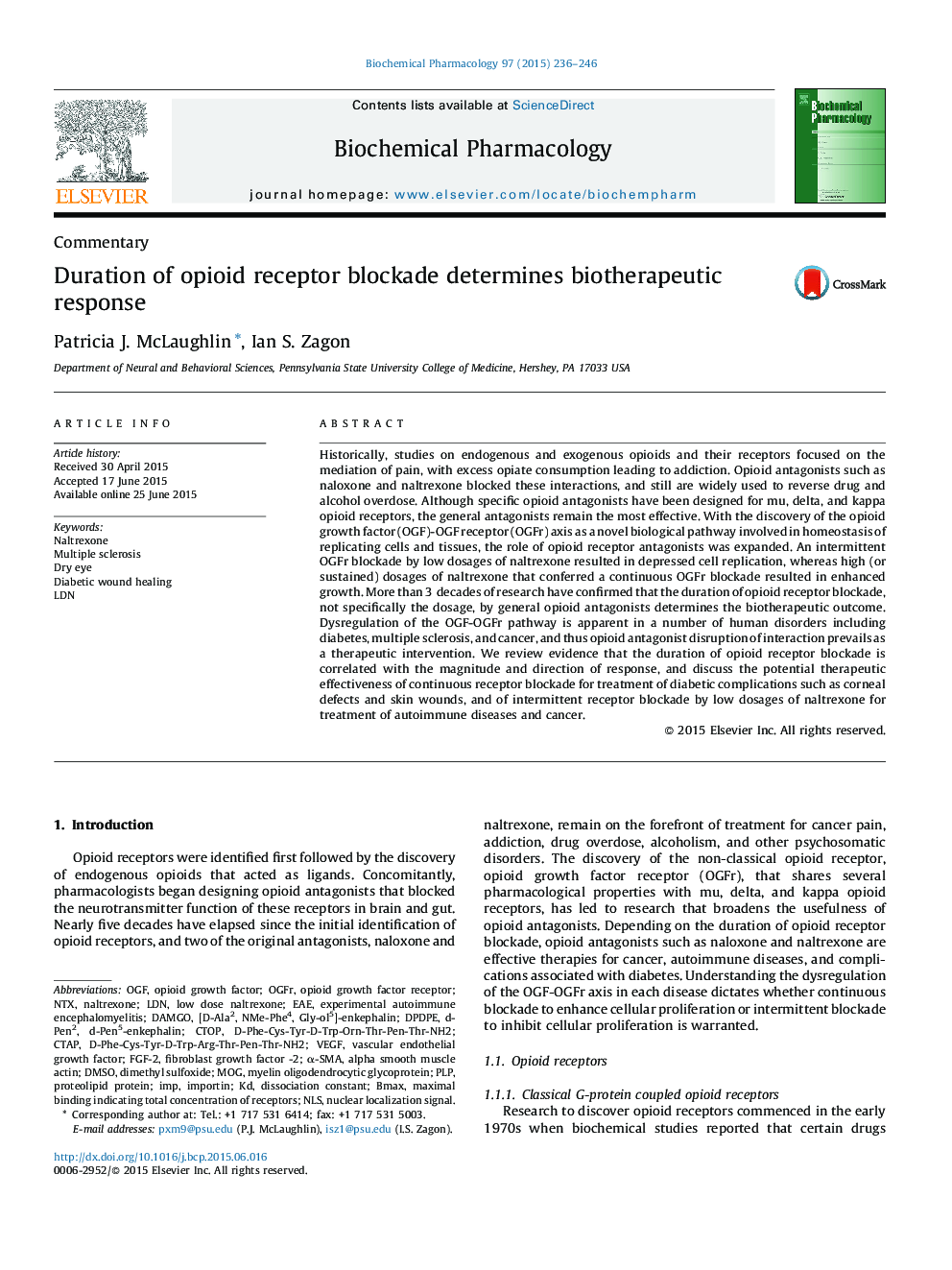| کد مقاله | کد نشریه | سال انتشار | مقاله انگلیسی | نسخه تمام متن |
|---|---|---|---|---|
| 2512091 | 1118313 | 2015 | 11 صفحه PDF | دانلود رایگان |
Historically, studies on endogenous and exogenous opioids and their receptors focused on the mediation of pain, with excess opiate consumption leading to addiction. Opioid antagonists such as naloxone and naltrexone blocked these interactions, and still are widely used to reverse drug and alcohol overdose. Although specific opioid antagonists have been designed for mu, delta, and kappa opioid receptors, the general antagonists remain the most effective. With the discovery of the opioid growth factor (OGF)-OGF receptor (OGFr) axis as a novel biological pathway involved in homeostasis of replicating cells and tissues, the role of opioid receptor antagonists was expanded. An intermittent OGFr blockade by low dosages of naltrexone resulted in depressed cell replication, whereas high (or sustained) dosages of naltrexone that conferred a continuous OGFr blockade resulted in enhanced growth. More than 3 decades of research have confirmed that the duration of opioid receptor blockade, not specifically the dosage, by general opioid antagonists determines the biotherapeutic outcome. Dysregulation of the OGF-OGFr pathway is apparent in a number of human disorders including diabetes, multiple sclerosis, and cancer, and thus opioid antagonist disruption of interaction prevails as a therapeutic intervention. We review evidence that the duration of opioid receptor blockade is correlated with the magnitude and direction of response, and discuss the potential therapeutic effectiveness of continuous receptor blockade for treatment of diabetic complications such as corneal defects and skin wounds, and of intermittent receptor blockade by low dosages of naltrexone for treatment of autoimmune diseases and cancer.
Figure optionsDownload as PowerPoint slide
Journal: Biochemical Pharmacology - Volume 97, Issue 3, 1 October 2015, Pages 236–246
